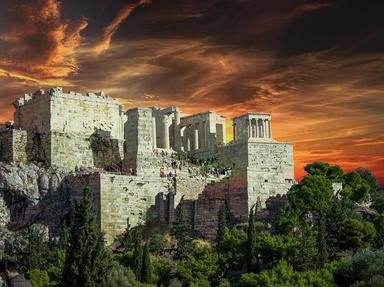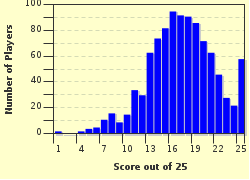Quiz Answer Key and Fun Facts
1. These were bronze leg guards worn by Mycenaean soldiers.
2. This was an elite group of well trained and well armed Greek foot soldiers. What were they called?
3. This genre of Greek drama centered on heroes of Greek myths and dealt with moral choices, passions, and conflict.
4. What is the term used for a professional poet?
5. Which of this terms means "rule by the important people"?
6. This Persian king expanded his empire and began a conflict between Persia and Greece over the province of Ionia.
7. This Greek scientist concluded that much of the Earth had once been covered in water, and that people had developed from other animals.
8. Who is the bard to whom the epic poems "The Iliad" and "The Odyssey" are traditionally ascribed?
9. This family line ruled the section of Alexander's empire that included the Middle East and Central Asia.
10. Which war between Athens (and its allies) and Sparta (and its allies) that tore apart Greece and weakened the city-states beyond repair?
11. Who is hailed as the "Father of Geometry"?
12. Which King of Macedonia expanded his empire to include most of Greece?
13. This Athenian politician introduced many popular reforms but eventually abdicated. Who was it?
14. Which family line ruled the section of Alexander's empire that included Egypt?
15. Which new battle formation drastically changed combat from one-to-one fighting to organized formations?
16. Who was the first man to adopt a scientific approach to medicine?
17. Which Persian king led a second invasion into Greek territories by crossing the Hellespont on a bridge made of boats?
18. These were descendants of people who had resisted Spartan rule. What were they called?
19. Sparta and Athens were forced to sign a truce because of famine and exhaustion after this event.
20. Which of these was a Greek warship that was extremely fast?
21. In Greek mythology who was the king of the Olympians and the ruler of the sky?
22. What was the name, in Greek mythology, of the three-headed dog whose duty was to keep the living out of the Underworld and the dead in?
23. What is the name of Mother Earth in Greek mythology?
24. In Greek mythology who is the goddess of wisdom and war, as well as patron of a major Greek city?
25. In Greek mythology, who was the father of the Titans?
Source: Author
brittany1119
This quiz was reviewed by FunTrivia editor
bloomsby before going online.
Any errors found in FunTrivia content are routinely corrected through our feedback system.


